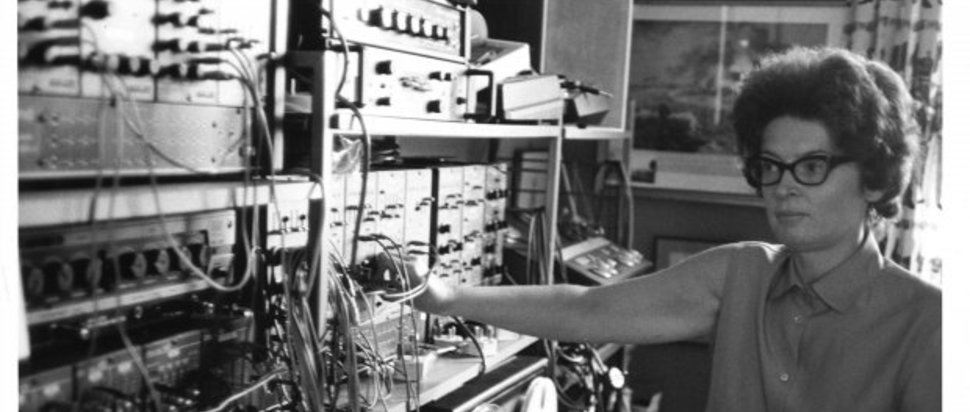A Brief History of Janet Beat
For years, electronic music pioneer Janet Beat went unnoticed, but Glasgow’s Tectonics festival and gender equality charity SWIM are drawing attention to her work
2022 marks big anniversaries for some notable names in Scotland’s electronic music scene: the infamous Glasgow venue Sub Club celebrates its 35th birthday, iconic club night Optimo (Espacio) marks its 25th anniversary, and revered record label LuckyMe turns 15. But for its 2022 edition, Glasgow’s Tectonics festival chose to celebrate a lesser-known but equally influential individual in Scottish electronic music.
Janet Beat is widely regarded as a pioneer in electronic music, and not only for her own compositions and musical scores. Born in Streetly, Staffordshire in 1937, Beat was interested in music from a young age. In an interview with Manchester-based composer Caro C for the British Music Collection, Beat said that she wrote her first piano piece at just three years old and bought her first tape machine in her late teens.
She began her musical studies at the Birmingham Conservatoire, where she studied piano and horn, before graduating with a Bachelor’s degree in music from Birmingham University and then completing a Masters in early Italian Opera. In 1972, she relocated to Scotland and began lecturing at the Royal Scottish Academy of Music and Drama, now known as the Royal Conservatoire of Scotland. During this time, Beat was responsible for setting up the school’s electronic music and recording studios, featuring a range of equipment, including ring modulators, low pass filters, and signal generators.
Throughout this time, Beat was also composing her own music, but it wasn’t until August last year – at the age of 83 – that she released her first official album, the aptly-titled Pioneering Knob Twiddler. Released on Trunk Records, both digitally and on vinyl, the album includes seven of Beat’s own compositions made between 1978-1987, using synthesisers, tape machines, and acoustic instruments.
Up until this point, Beat’s compositions – along with her published works, scores, and cassette recordings – had only been available through the British Music Collection’s archive. Like fellow early pioneers in electronic composition, such as Delia Derbyshire and Daphne Oram – the latter of whom was a supporter of Beat – much of her work went unnoticed for many years; perhaps even more so than some of her peers.
But Beat’s legacy has finally started to gain recognition in recent years. In 2019, she became the first recipient of the Scottish Women in Music (SWIM) Lifetime Achievement Award for her work in pushing forward electronic music and composition, with the award now named after her. One of SWIM’s founders, Hilary Brooks, says that Beat was “the obvious choice” for the gender equality charity’s first Lifetime Achievement Award.
Brooks first discovered Beat and her work as a student at the Royal Scottish Academy of Music & Drama, where Beat briefly taught her Harmony and Counterpoint, instilling a love of harmony in her. “Janet was a very early supporter of [SWIM],” she says. “She attended lots of meetings and, without hesitation, shared many an anecdote with fellow members about her experiences of being a woman composer in music – good and appalling. She is a survivor and an inspiration.”
Much of Beat’s work – specifically her interest in microtonal music and stereophonic sound – was initially met with resistance, not in any small part due to the fact that she was a woman creating music in a male-dominated field. However, through her willingness to take risks and go against the status quo, her work has been incredibly influential in advancing electronic music, not just in Scotland but across the world. It just goes to show that dancing to the beat of your own drum does, sometimes, pay off.
